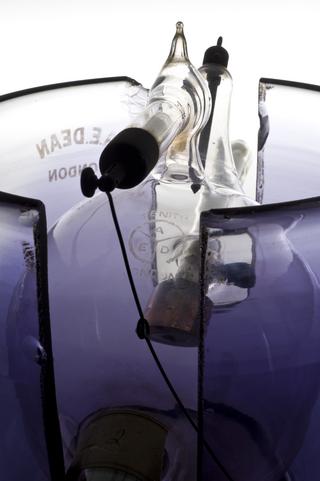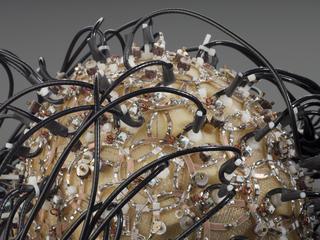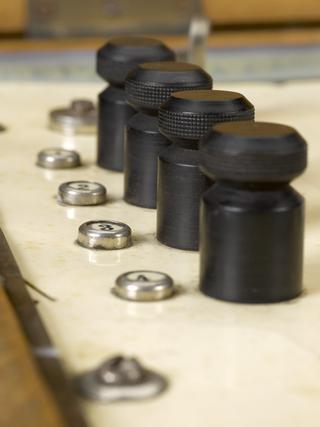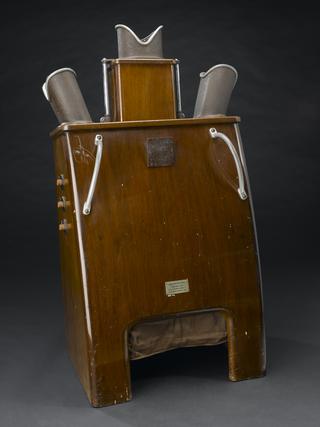
Lipiodol Ultra Fluid (1 of 4 packs 10ml and 4 packs each containing four 5ml ampoules)
- PART OF:
- Ampoules of Lipiodol
- Made:
- 1981 in Aulnay-sous-Bois
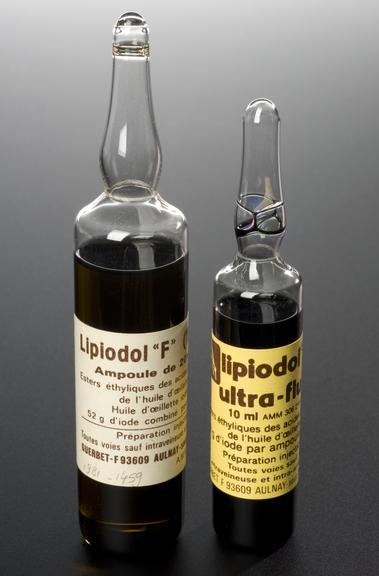
Lipiodol Ultra Fluid (1 of 4 packs 10ml and 4 packs each containing four 5ml ampoules), part of a set of two ampoules of Lipiodol, an iodine-containing x-ray contrast medium by Guerbet, 93609 Aulnay-sous-Bois, France, 1981.
Lipiodol is an oily liquid. It can be introduced into body cavities. It is radio-opaque because it contains iodine. This means it shows up on X-rays. Soft body tissues are normally barely visible because X-rays define denser structures such as bone.
Lipiodol was introduced in 1922. It has been widely used to demonstrate the nervous system, uterus, urinary tract and other organs on X-rays. Similar water-based preparations recently replaced Lipiodol in many types of X-ray work. This is because the images are easier to interpret. These two glass ampoules of the chemical were made by French manufacturer Guerbet.
Details
- Category:
- Radiomedicine
- Object Number:
- 1981-1459/1
- Materials:
- glass, paper (fibre product) and materia medica
- Measurements:
-
Lipiodol F: 109 mm 20 mm, 0.036 kg
Lipiodol ultra: 94 mm 15 mm, 0.02 kg
- type:
- x-ray contrast media
